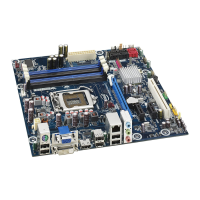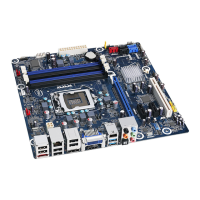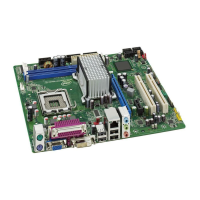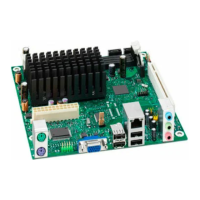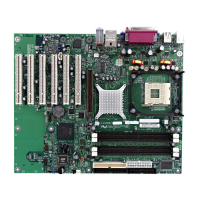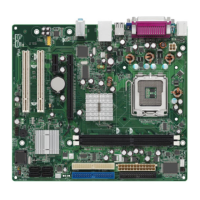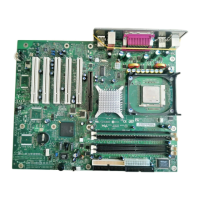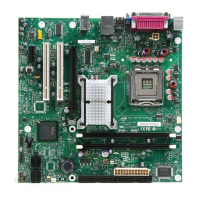
Do you have a question about the Intel Thin Mini-ITX and is the answer not in the manual?
| Form Factor | Thin Mini-ITX |
|---|---|
| Dimensions | 170mm x 170mm |
| LAN | Gigabit Ethernet |
| Power Input | 19V DC |
| Chipset | Intel H110 |
| Memory Type | DDR4 |
| Memory Slots | 2 |
| Max Memory | 32GB |
| Storage | M.2, SATA |
| Expansion Slots | M.2 |
| USB Ports | USB 3.0, USB 2.0 |
| Video Outputs | HDMI, DisplayPort |
| Audio | Realtek ALC codec |
Defines the document's objective and the scope of system design guidance for Thin Mini-ITX.
Introduces the Thin Mini-ITX form factor and its common applications.
Details the business model and common features of All-In-One PCs.
Describes the 'Tiny PC' category and its specific characteristics.
Defines key terms used throughout the design guide for clarity.
Lists relevant industry standards and specifications for further consultation.
Outlines standardized internal motherboard connectors for chassis interchangeability.
Covers interface requirements for flat panel displays, including LVDS and eDP.
Specifies the 40-pin LVDS connector for flat panel display and backlight connectivity.
Details the optional eDP interface for higher resolutions and advanced features.
Defines the 8-pin connector for backlight control and brightness adjustment.
Discusses BIOS support for display brightness control and status display.
Covers audio interfaces for front panel and internal speakers.
Specifies pinouts for AC'97 and HD Audio front panel connectors.
Defines the header for connecting internal stereo speakers to the motherboard.
Outlines the pinout and header for digital microphone support.
Recommends SATA data/power connectors for storage device connectivity.
Details internal USB headers for connecting devices like webcams and card readers.
Specifies the 2x5 header for front panel dual USB 2.0 ports.
Defines the 2x5 header for internal dual USB 2.0 ports.
Specifies the 1x5 header for internal single USB 2.0 ports.
Details the 2x10 header for internal USB 3.0 ports.
Standardizes USB 3.0 header orientation for low-profile AIO applications.
Covers front panel connectors for power, reset switches, and status LEDs.
Specifies the connector for 19V internal power input.
Details fan headers for CPU and system cooling.
Defines the 4-pin CPU fan header, including color and current rating.
Covers 3-pin or 4-pin system fan headers and their color coding.
Optional connector for consumer IR receiver functionality.
Options for integrating Bluetooth functionality via USB or mini PCIe.
Header for controlling display backlight and optional functions.
Discusses AC adapter power ratings for various system configurations.
Specifies the 19V DC power connector for socketed CPU systems.
Addresses challenges in cooling thin chassis and general recommendations.
Discusses blower selection, placement, and airflow optimization for cooling.
Explains CPU throttling mechanisms and fan speed control for thermal management.
Defines Free Area Ratio and its impact on airflow and EMI performance.
Addresses dust accumulation and mitigation strategies for reliable operation.
Provides guidelines for safe operating temperatures for users and components.
Covers cooling strategies for key motherboard components.
Discusses airflow considerations for SO-DIMM memory modules.
Addresses cooling requirements for the PCH for optimal performance.
Details strategies for cooling voltage regulator components to prevent throttling.
Outlines acoustic noise level targets and measurement standards for system quietness.
Specifies CPU heat sink retention hole patterns and keep-in zones for compatibility.
Recommends standardized locations for internal motherboard headers for easier integration.
Covers cable routing and mating connectors within the volumetric envelope.
Details cables that should ship with the chassis or motherboard for connectivity.
Addresses mechanical requirements for thermal solutions and fan mounting.
Provides an example of a Thin Mini-ITX I/O shield for chassis integration.
Covers aspects of system design for ease of integration and serviceability.
Discusses mechanical considerations specific to All-In-One systems for optimal design.
Defines chassis requirements for compatibility with the reference thermal solution.
Introduces Intel's HTS1155LP reference thermal solution for CPU cooling.
Discusses component layouts for All-In-One and Tiny PC systems.
Provides guidance on airflow, component placement, and thermal management strategies.
Presents example layouts for CPU systems with reference thermal solutions.
Describes Intel's method for validating system thermal performance.
Lists the specific hardware and software used in thermal testing for consistency.
Details the software used for CPU and memory thermal stress testing.
Specifies where temperature sensors are placed during thermal testing for accurate data.


